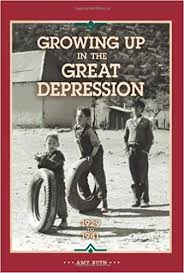History and Thanksgiving
Listen to the Recess! Clip
| Author | Lauren Brosnihan |
| Air Date | 11/27/2003 |

History and Thanksgiving Transcript
As we celebrate Thanksgiving it’s difficult to imagine what that first celebration was like for the Allertons, Hopkinses, and other families who broke bread together on that autumn day nearly four hundred years ago. How do we even know who was present? There are two first-hand accounts by the leaders of the Plymouth settlement, Edward Winslow and William Bradford, and these have been mixed together into the version that is passed down to most children in America.
But how do we keep children and young adults interested in history beyond these stories that we absorb in childhood? The “Our America” series of books provides one example of how young readers can be connected with the idea that history is vital and evolving, and can be continuously studied and reinterpreted. The “Our America” series does this by asking new questions, by reevaluating standard answers, and by broadening the definition of primary sources to include diaries, songs, correspondence, tools, handicrafts, paintings, photographs, and even recipes. Such an approach encourages young readers and future researchers to use a wide range of facts (and not just treaties) to better understand historical events.
Currently there are seven books in the series, beginning with Growing Up in a New World, a volume that spans the history of the United States from 1607-1775. The other books, all by different authors, look at the American Revolution, Pioneer America, the Civil War, the turn of the 19th century, the Great Depression, and World War II. Each brings young students of history into the subject by focusing on the everyday lives of children during these times. For example, in the volume on pioneer America, what the reader learns about one-room schoolhouses includes not only information about the curriculum, but also the punishments for disobedience, and the games children played at recess.
There are other ways to spark interest in history in our homes and schools, like an annual contest that encourages young historians to participate in regional history fairs culminating in June with National History Day. The theme for the 2004 competition is “Exploration, Encounter and Exchange.” But whether it is through books or a history fair, the larger purpose is to encourage children to look at history with fresh eyes, and with a memory that cares about knowing that Bartholomew, Mary, Remember, Love, Wrestling, John, Humility, Samuel, Damaris, Ocea, Richard, Resolved and Peregrine were the names of the children who dined at that first Thanksgiving feast.
Sources:
Pilgrim Hall Museum http://www.pilgrim hall.org/1stthnks.htm
National History Day http://nationalhistoryday.org